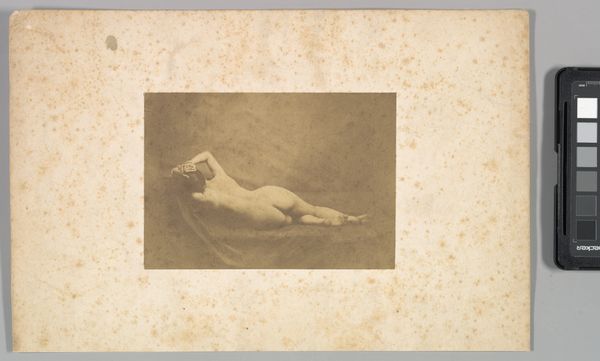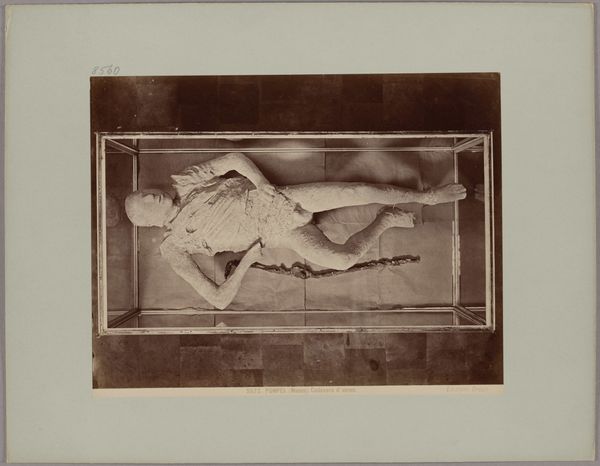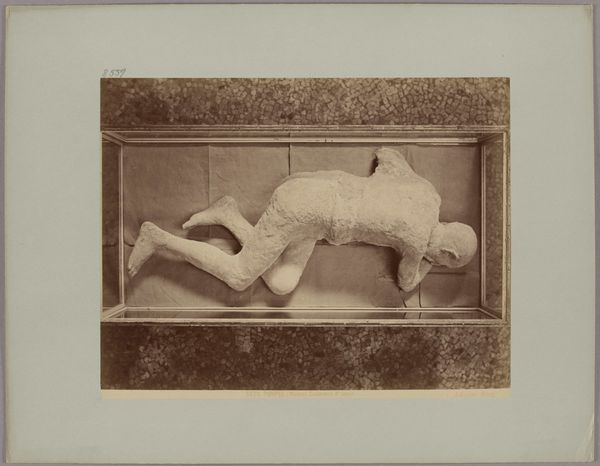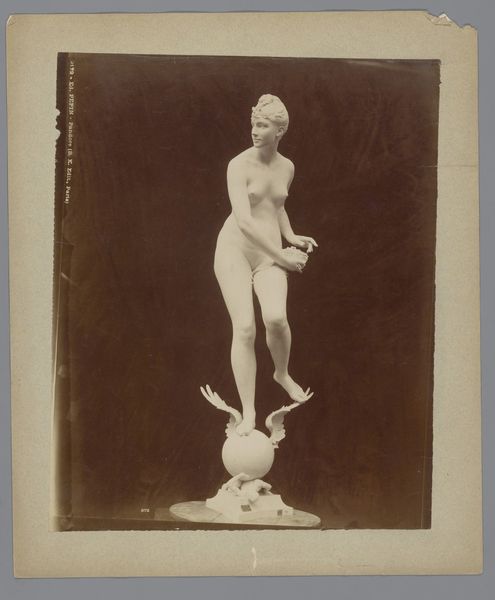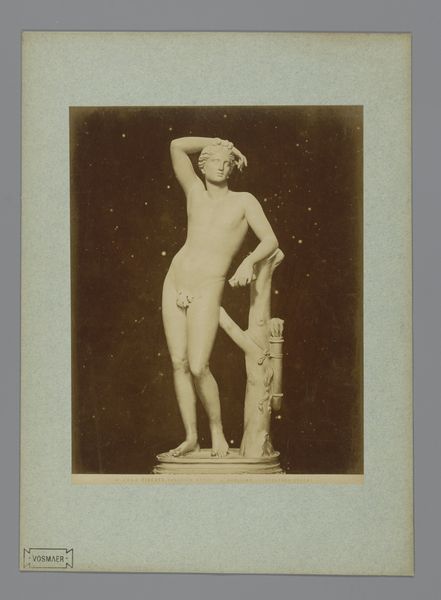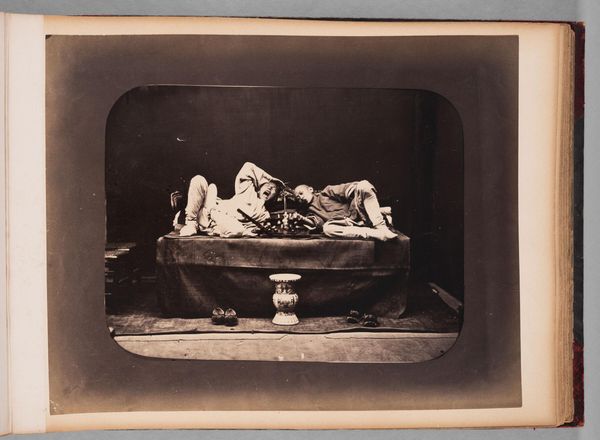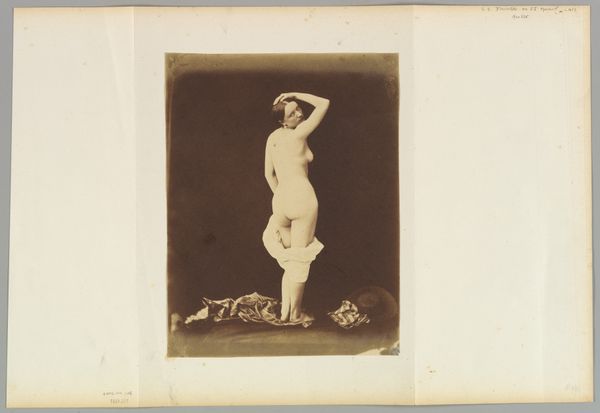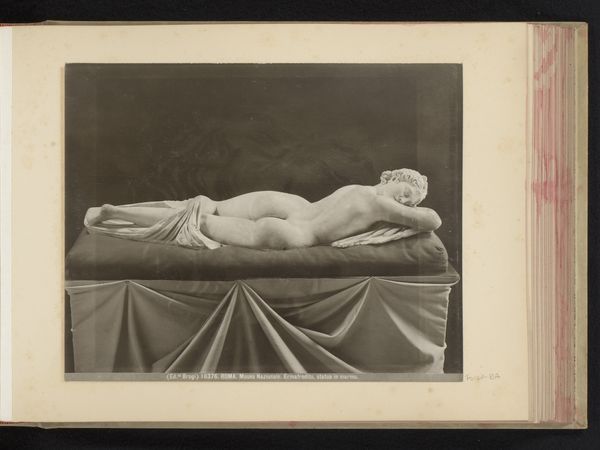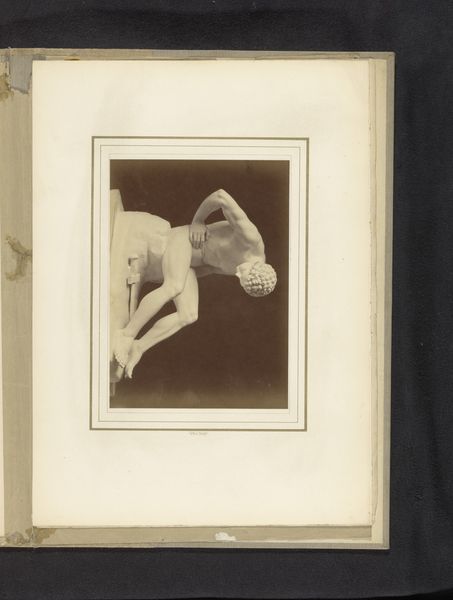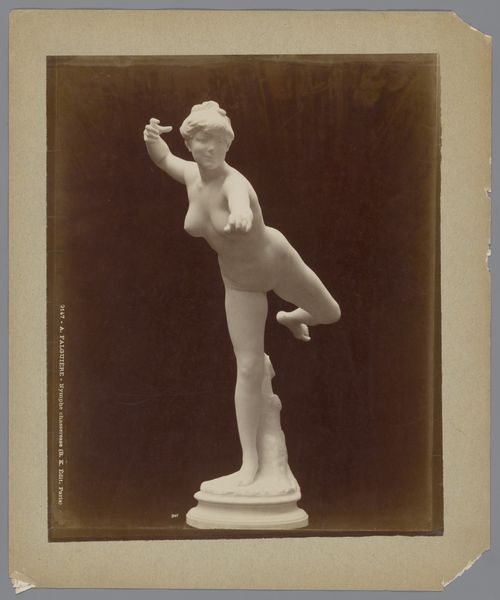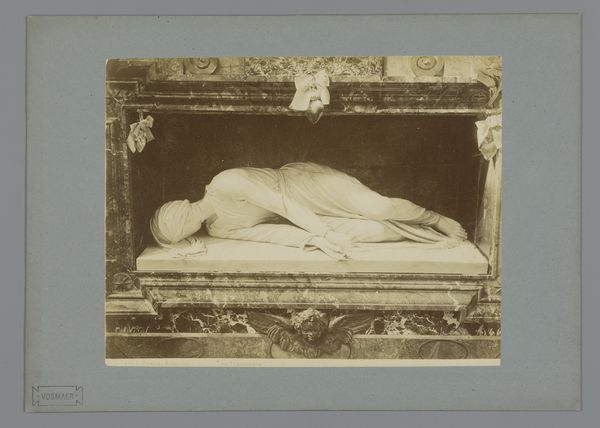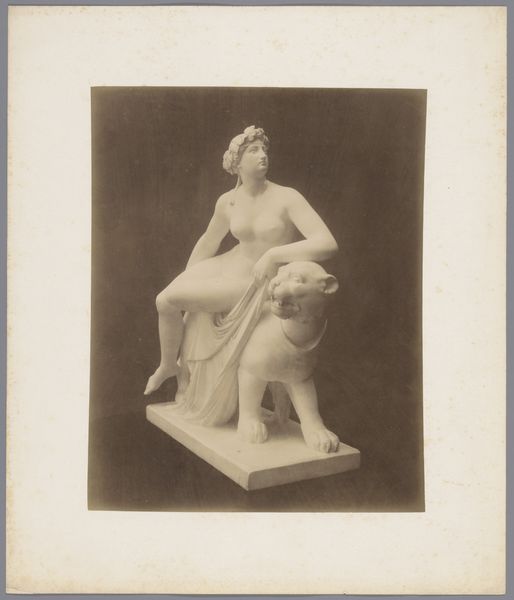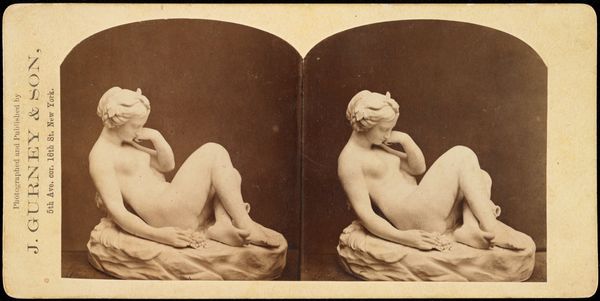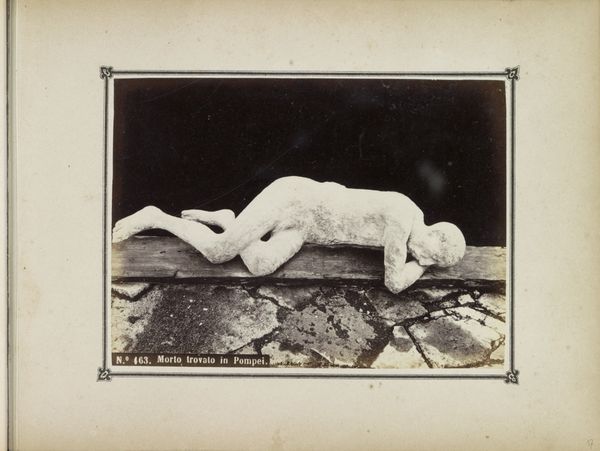
Beeld van een gewonde soldaat, afkomstig van het fronton van de tempel te Egina c. 1875 - 1900
0:00
0:00
photography, sculpture
#
portrait
#
greek-and-roman-art
#
photography
#
sculpture
#
nude
#
realism
Dimensions: height 199 mm, width 255 mm
Copyright: Rijks Museum: Open Domain
This photograph by Adolphe Giraudon captures a sculpture of a wounded soldier, originally part of the Temple of Aphaia in Aegina. This image allows us to consider the public role of art and the politics of imagery in both ancient Greece and 19th-century Europe. The sculpture, dating back to around 500 BC, likely served to glorify military prowess and civic duty. Yet, Giraudon's photograph, created in the late 19th century, presents us with a different context. Photography at this time was rapidly changing the consumption of art and its ability to reach a wider audience. Reproductions like this one facilitated the study of classical art. They influenced contemporary artistic production. As historians, we consult museum archives, art criticism, and social histories to fully understand the meaning of works of art. This enables us to understand how an artwork’s meaning is contingent on both its original social and institutional contexts and those in which it circulates later.
Comments
No comments
Be the first to comment and join the conversation on the ultimate creative platform.
